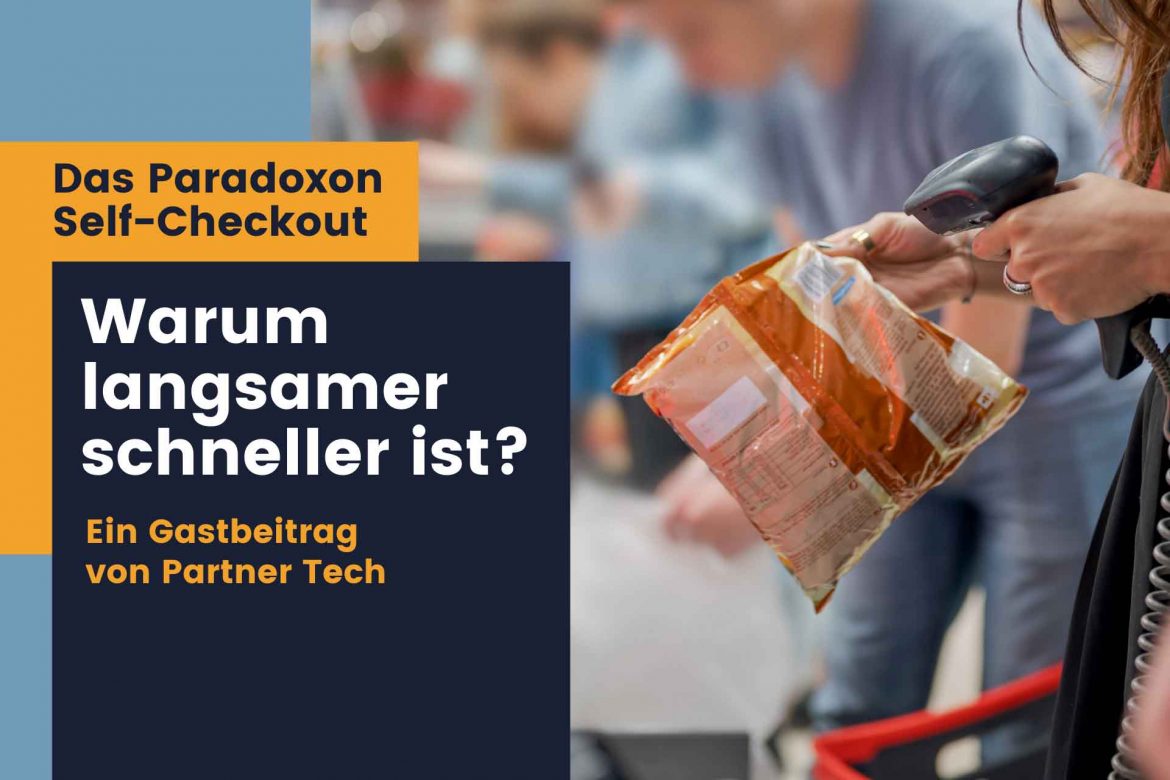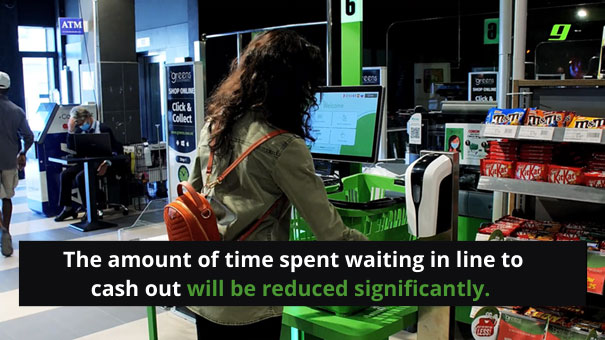
The paradox of self-checkouts.
Why slower is faster?
Retailers are increasingly willing to supply their shops with self-service devices. New technologies in retail are in demand. Both by shop owners and by customers. Undoubtedly, self-checkouts provide the feeling of a more convenient and faster shopping process. We can see the paradox of self-checkouts. The customer prefers to spend more time scanning his purchases on his own rather than queue at a regular checkout. Why is this the case?
The self-checkout paradox – what is it?
In fact, shopping at a self-checkout takes slightly longer than at a traditional checkout, where two people are involved in completing the purchase. The customer lays out and wraps the shopping, the cashier scans it. In the case of self-checkouts, you have to do all the work yourself. However, customers perceive the shopping experience at a self-checkout as faster and more efficient than at a traditional checkout. This feeling makes the customer leave the shop with a positive experience. This is very beneficial for retailers because the checkout experience is the last thing the customer remembers when leaving the shop. And when you create positive emotions around the shop, the customer is more likely to return.
Self-service checkout = fast shopping
The paradox of self-checkouts reduces the negative feelings associated with queuing and spending endless time in the shop. The customer has come to the shop to select and pay for goods. Long queues at the checkout can be a real pain in the neck, even if the product you want is on super-promotion. Standing in line makes customers feel like they are wasting their time. Standing and waiting for others is frustrating. Self-checkouts allow you to control your own time. The customer comes into the shop, selects the goods, scans, pays and leaves. They, not the queues, decide how much time they will spend in the shop. In addition, being on the move while scanning is a kind of ritual that provides peace of mind and a positive feeling in contrast to the stress of queuing at traditional checkouts.
The problem with queues is that some customers, especially those buying smaller products, find them so annoying that they would rather leave the shop without making a purchase than wait. With self-checkouts, retailers have the chance to cater to these customers, rather than risk losing them to nearby smaller corner shops – a clear transactional benefit of the self-checkout paradox.

Customers do not like queues. Self-service checkouts
make the shopping experience fast and convenient
Shop image and self-checkouts
For retailers, no or shorter queues mean fewer staff. This is not only more cost-effective. Self-checkouts allow you to provide quality customer service not only when finalising the purchase, but also during the selection process. Let’s take a look. One assistant is enough to operate up to eight self-checkouts. The rest of the staff can then focus on real interaction, making contact with the customer and creating a positive image of the shop, e.g. by offering advice, restocking or cleaning.
An important element that needs to be addressed when writing about the paradox of self-checkouts are interventions, or rather the lack thereof. An intervention happens when something happens at the checkout that requires an employee’s action. In order not to lose the positive customer experience achieved by the self-service checkout paradox, it is important to ensure that the number of interventions is as low as possible. This is possible by carefully analysing the most frequent interventions in a shop and finding a solution. For example, a frequent cause of intervention is the check gates, which open after scanning a paid receipt. This activity causes frustration and more interventions in case of lost receipts or scanning failures. It is worth rethinking whether it is better to implement self-checkouts based on security scales. A checkout system based on a security scale also ensures that all products are scanned before the customer packs them up and leaves the shop.
Conclusion
The paradox of self-checkouts is that shopping is perceived as fast and convenient. The customer does not feel that time is wasted; on the contrary, he feels that he has used his shopping time to 100%. They leave the shop satisfied with their shopping and with themselves. A positive customer experience is not the only benefit for the retailer. Self-service checkouts reduce staff costs and retain customers who want to buy fewer products. Everything that self-service checkouts offer to a shop can be encapsulated in one word: profit.
Partner Tech Europe
As a member of the QISDA Group, Partner Tech is the leading developer and manufacturer of POS solutions, POS peripherals and mobile solutions. Since 1990, Partner Tech has been selling its innovative technology worldwide, from mobile ordering systems to compact all-in-one systems and self-service terminals.
With its European headquarters in Norderstedt, Germany, Partner Tech Europe takes care of European needs in today's globalizing world. In addition to traditional sales, Partner Tech Europe also offers services including installation, maintenance and repair, and all other point-of-sale related topics. Also consulting to optimize sales processes and product/project management for individual solutions, the Partner Tech Europa team is the right contact.
Profile guest author Michael Fritz

Michael Fritz has been a project manager at Partner Tech since 2020 and has been in the retail sector since 2003. He is responsible for the areas of vending, cash management, ESL and SCO.
Did you like our article? Then feel free to share it. Our next guest article is all about self-checkout.

